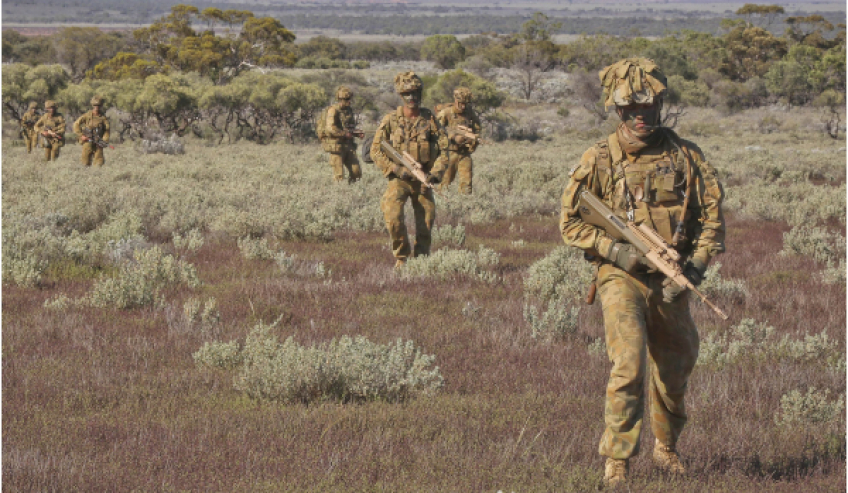The Department of Defence via the Defence Innovation Hub is seeking innovation proposals that will assist Defence in developing a soldier personal area network (SPAN) that connects the soldier to current and future systems and communication networks – a Network Centric Soldier.
To continue reading the rest of this article, please log in.
Create free account to get unlimited news articles and more!
For geographically dispersed soldiers and commanders, the ability to fuse multiple sensor data feeds and exchange information through a useful interface is challenging. At the first Australia-Israel Defence Industry Cooperation Joint Working Group held on 9 July 2018, both the Australian Department of Defence (ADOD) and the Israeli Ministry of Defense (IMOD) identified this shared capability challenge and the need for innovative solutions.
Emerging technologies have seen multiple systems on the soldier providing advanced capabilities to enhance the lethality, survivability and situational awareness of the dismounted combatant. Currently these are largely stand-alone and the ability to combine or fuse these is very limited.
Soldiers currently carry a number of discrete sensors that collect data, such as laser range finders, rifle optics, cameras, thermal imagers and night vision systems. To increase the effectiveness of the soldier, Defence is seeking new technologies (i.e. novel communication systems, smart devices and/or cyber systems) that can network these systems, collate and analyse the data and display key information onto a single device (such as a tablet, weapon optic etc).
This network of systems (or the SPAN) should be able to connect to current and future systems and with broader Army networks. For example, information gathered and exchanged on an individual soldier should be able to feed into Army’s Land Combat System (including the Battle Management System [BMS]).
Defence is particularly interested in technologies that answer the following questions:
- What information sharing system can be developed to integrate all the inputs used by the soldier to create a SPAN that will allow them to effectively receive, send and use the information within their section/platoon (including integration into BMS)?
- What innovative capabilities exist to allow Defence to connect, analyse, share and receive system data from multiple sources in real-time to create an effective SPAN?
Respondents should note that this is a capability challenge shared by both the Australian Defence Force and the Israeli Defense Force. Respondents are encouraged to think creatively about ways in which they may be able to address this shared capability challenge, including potential opportunities for collaboration with other entities in order to meet the needs of both the ADOD and the IMOD.
Defence’s objective in this call for submissions (Stage 1) is to select up to 10 respondents to display, exhibit and demonstrate their proposed innovations at the ADOD’s Army Innovation Day on 25 October 2018. After the day has concluded, Defence will invite selected respondents successful at Stage 1 to participate in a more detailed request for proposals process (Stage 2).
Defence’s aim for Stage 2 is to select one or more respondents to enter into an Innovation Contract with Defence to deliver a prototype of the technology for user trial and evaluations with the ADF within 12 months of Army Innovation Day 2018.
More information about the CDIC's request for submissions, including the form to create a new proposal, is available here.
Stephen Kuper
Steve has an extensive career across government, defence industry and advocacy, having previously worked for cabinet ministers at both Federal and State levels.

 Login
Login








